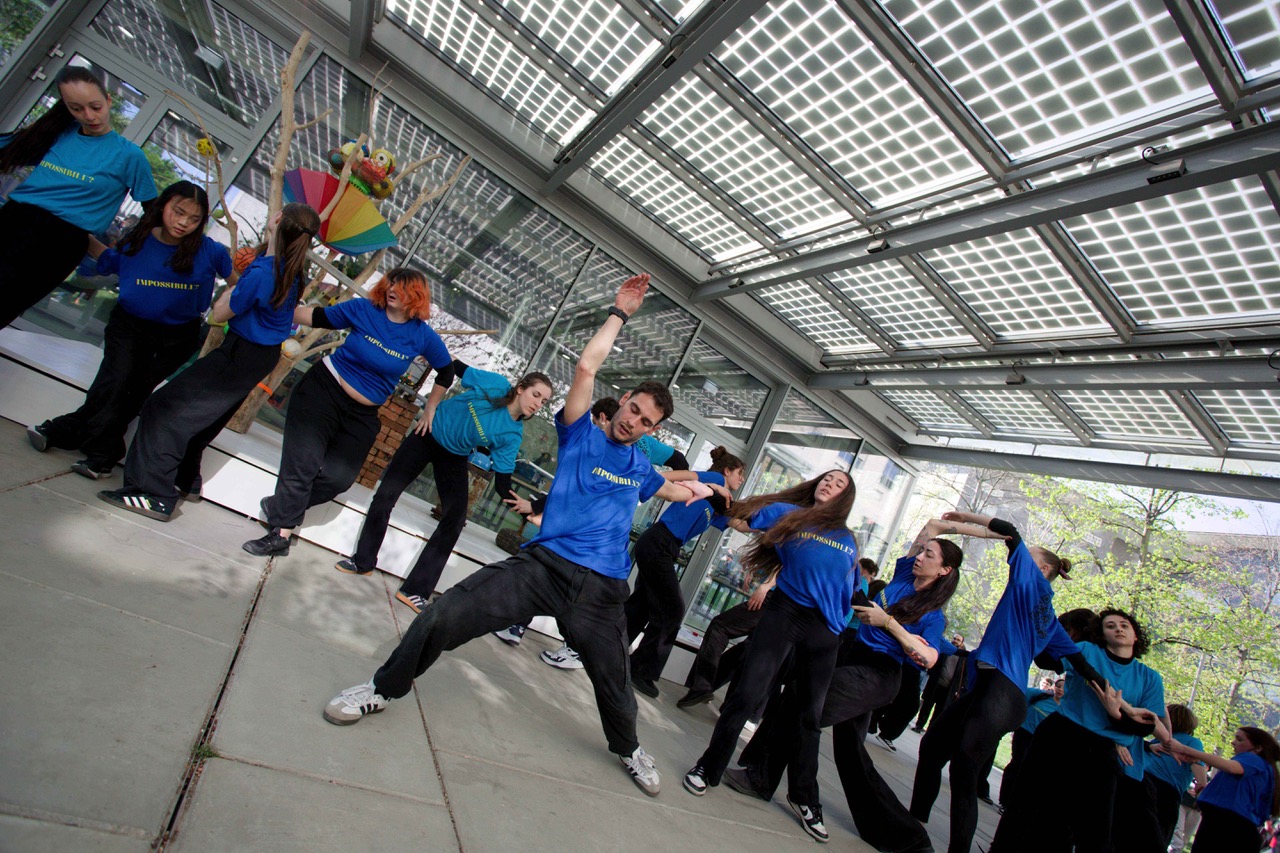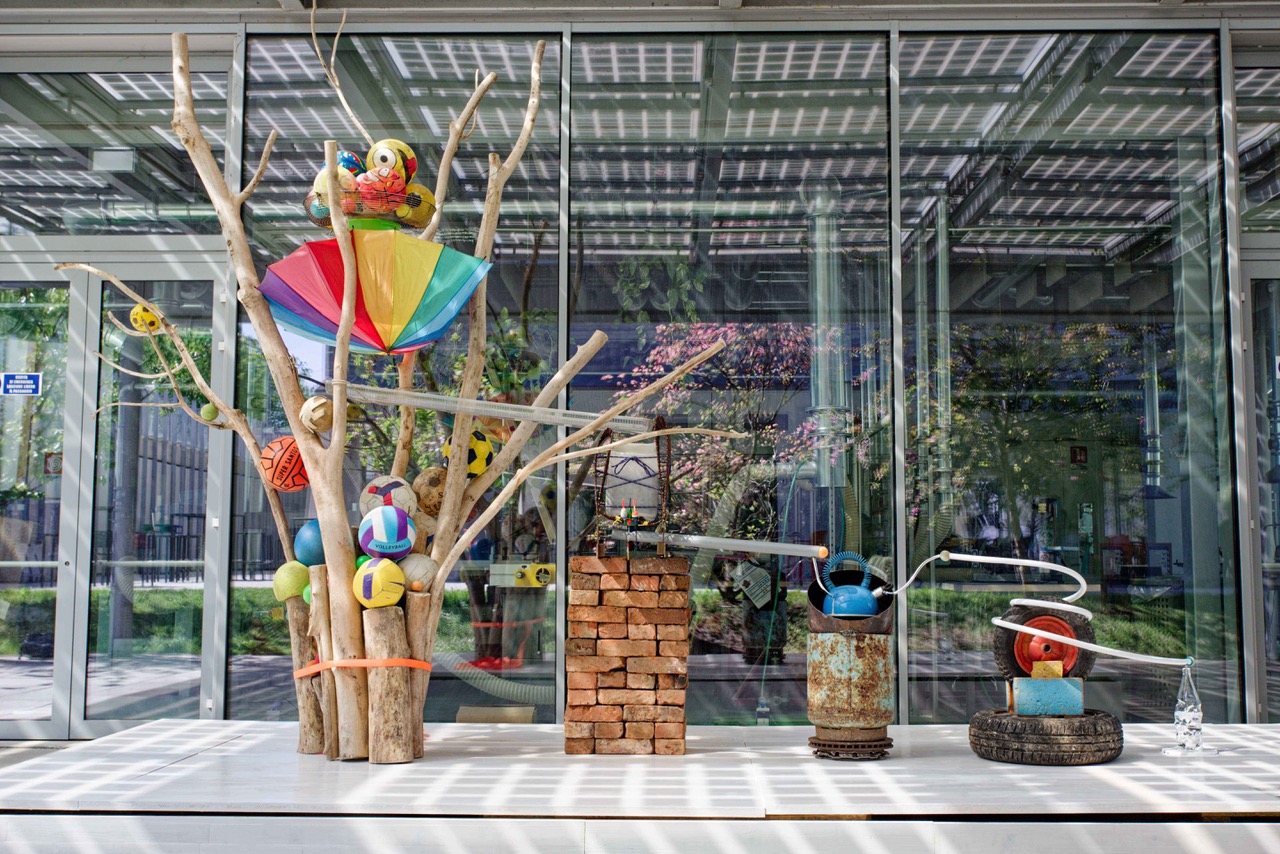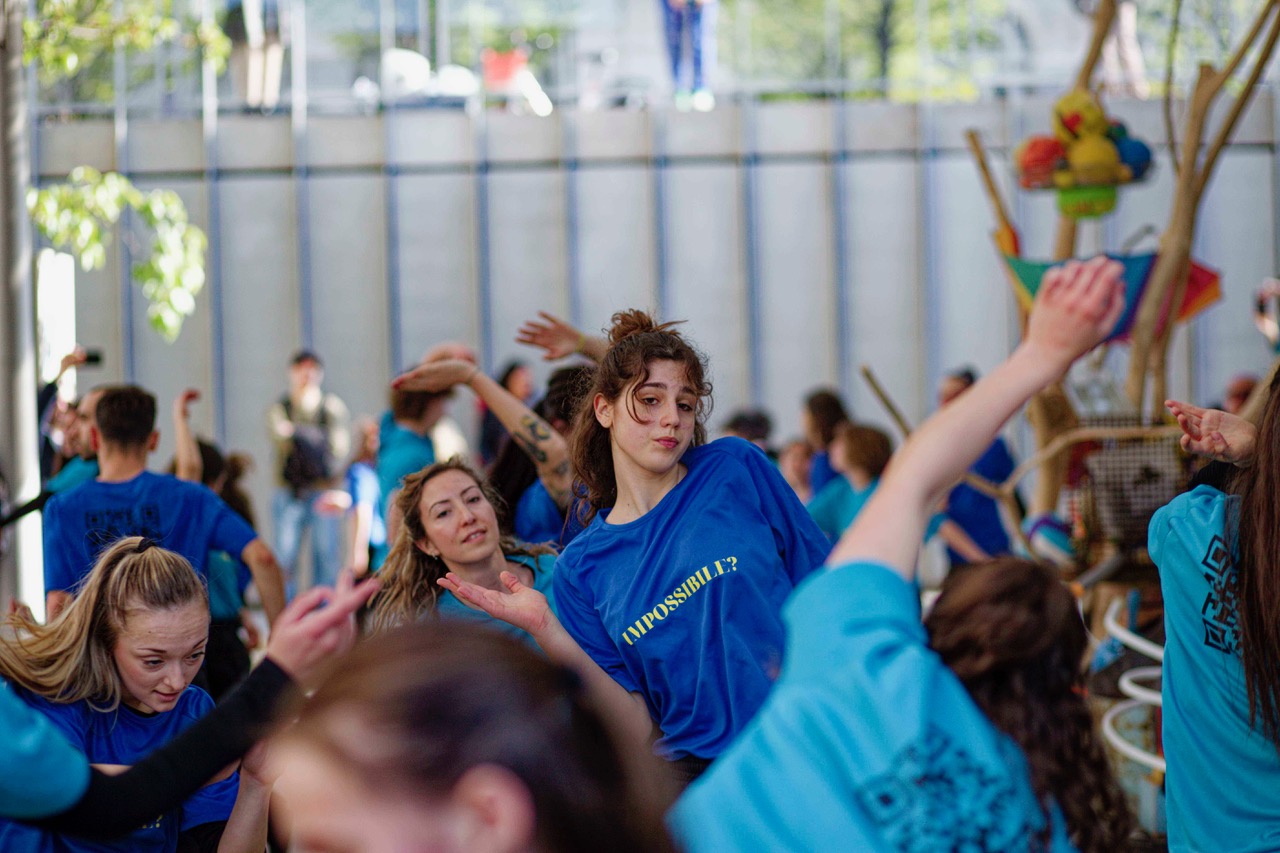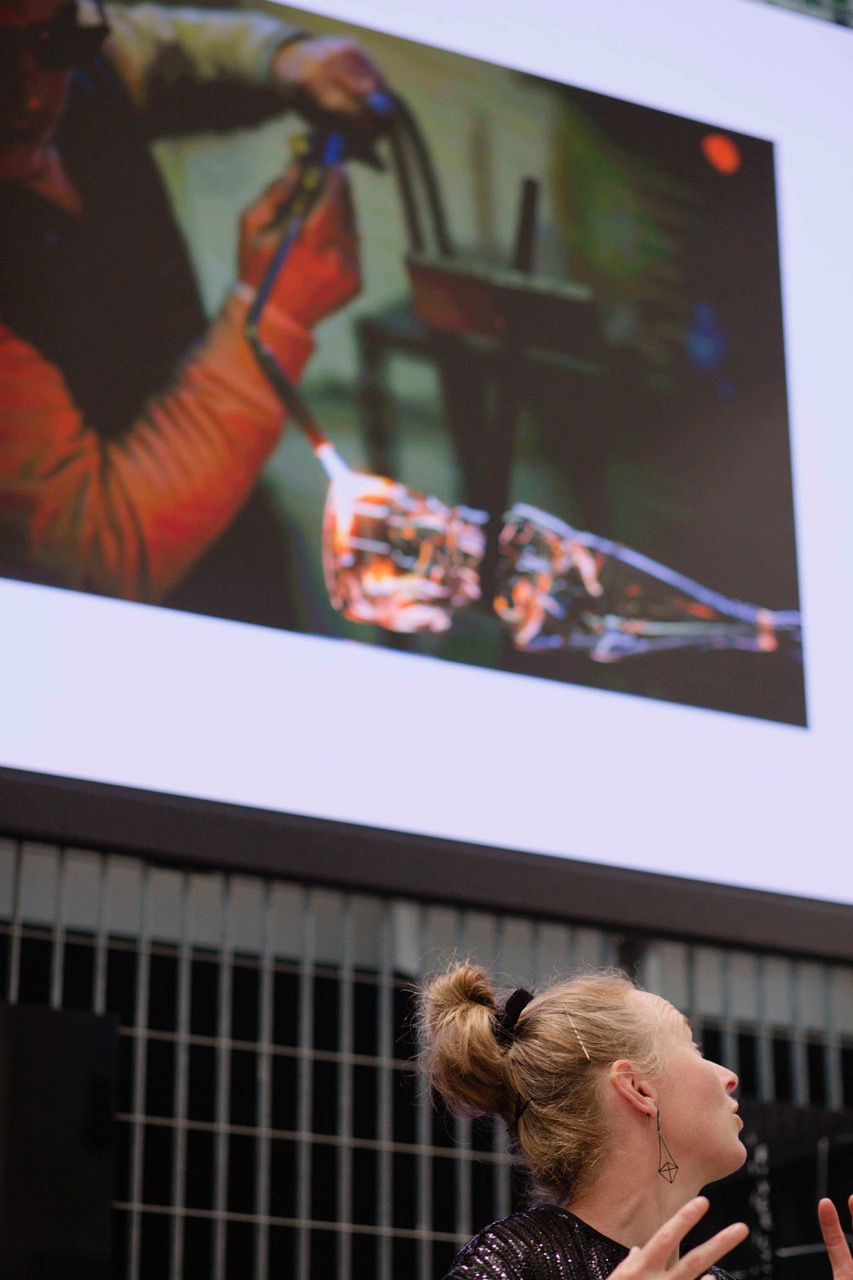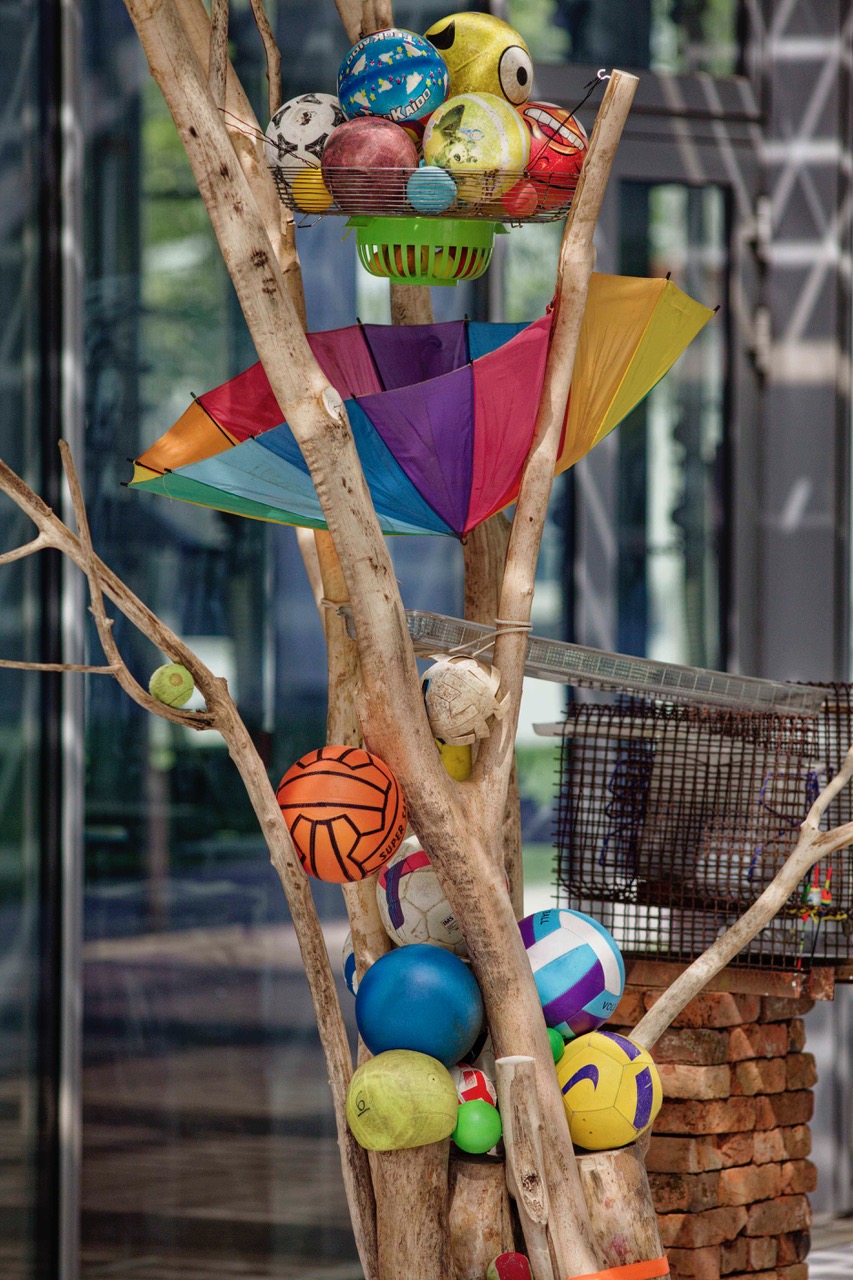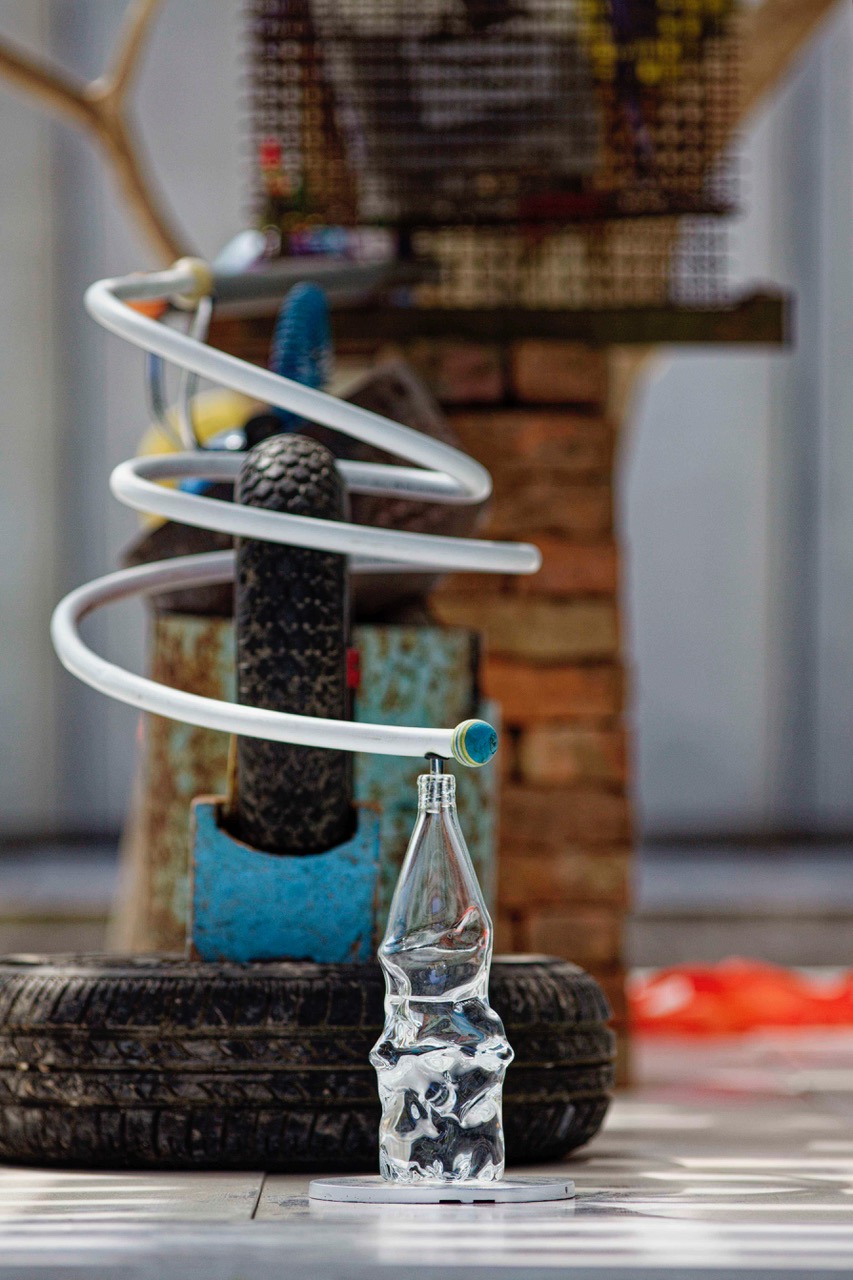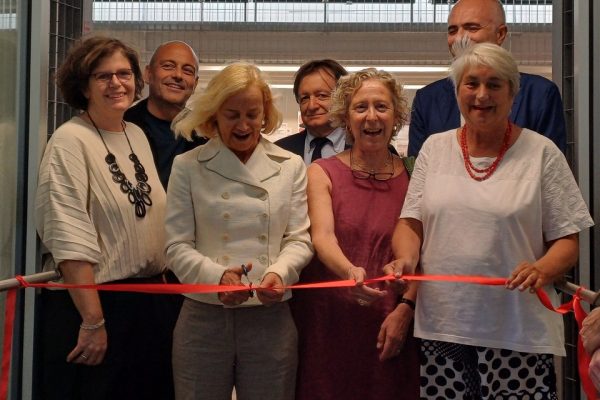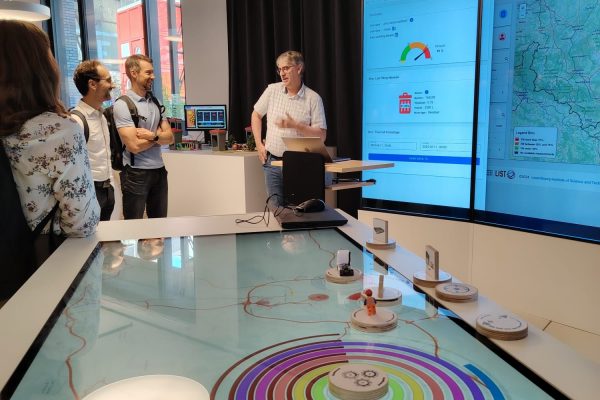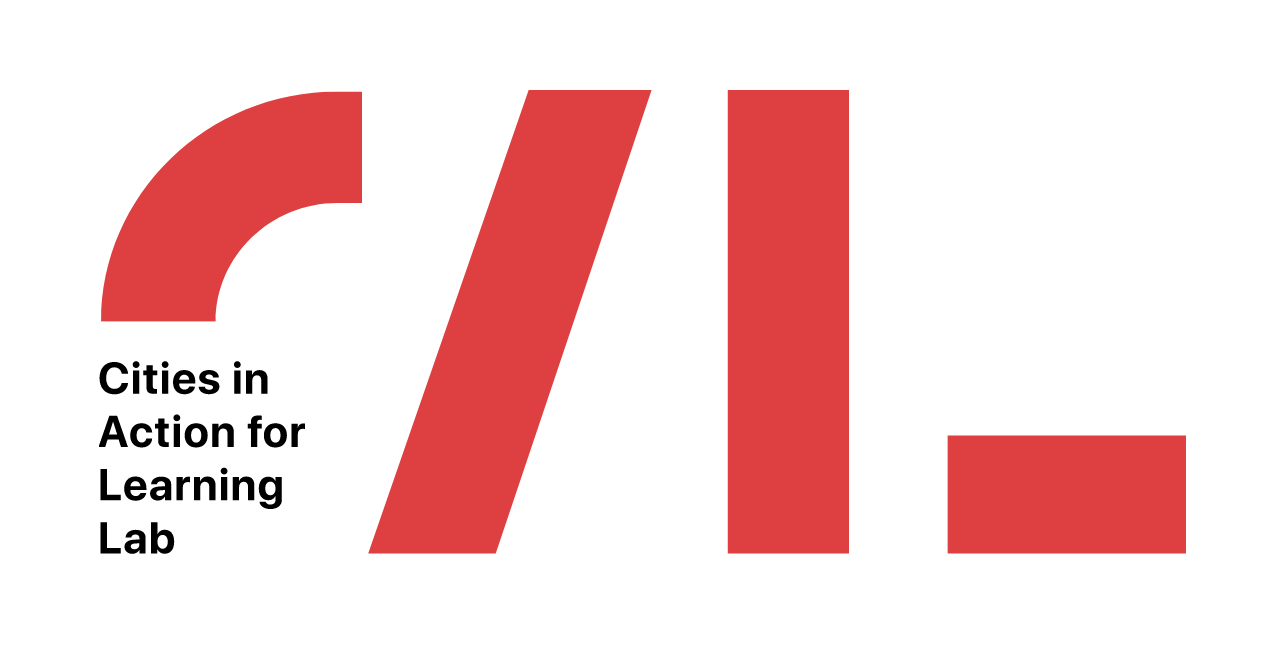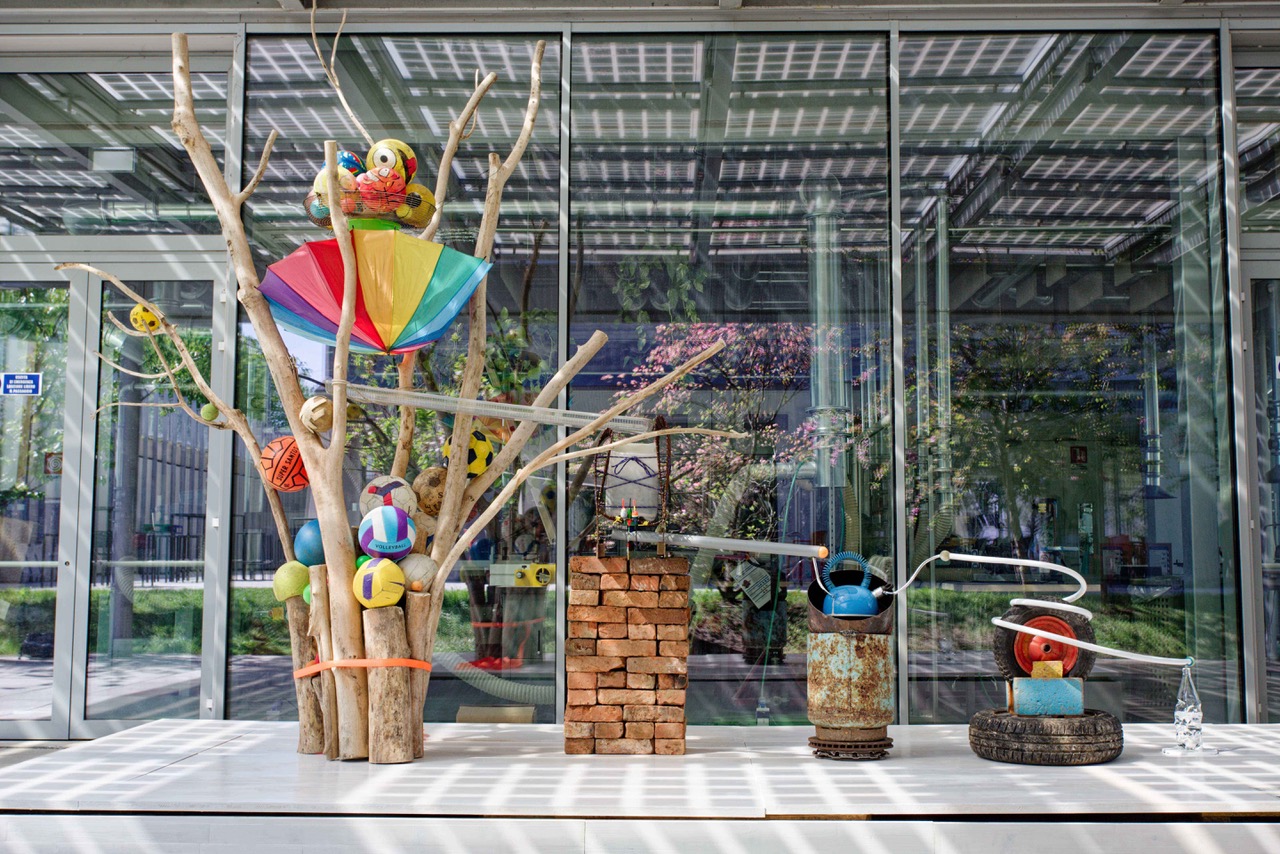
Acqua Lambro: the “impossible idea” presented at Politecnico di Milano during Design Week
Envisioning Translocality
Enabling Institutions
Enforcing Practices
During Milan Design Week 2025, was officially presented the artistic project Acqua Lambro to the city of Milan. The artwork conceived by the British-Irish duo gethan&myles and piloted by PALIMPSEST was revealed to the public in the open spaces of the Leonardo Campus at Politecnico di Milano.
Acqua Lambro is a project of art, design, and ecology built around an “impossible idea”: transforming the water of one of the most polluted rivers in Europe into prestigious mineral water. Halfway between speculative design, situationist provocation, and environmental activism, the project aims to reopen the possibility of a reciprocal relationship of care between the Lambro River and the people of Milan.
Acqua Lambro is composed of two artworks:
A macchina di gioia, a machine-sculpture made with materials recovered from the river. Through filtration and evaporation, it transforms the contaminated water of the Lambro into “impossible” mineral water. The water collected from the river contains pollutants such as suspended solids (sand and mud), organic matter (bacteria and microorganisms), and chemical substances (especially nitrates and phosphates). After passing through the machine, the water was analyzed by ERSAF (Regional Agency for Agricultural and Forestry Services) and was found to be pure and drinkable.
Il mondo è un inquinante – of which a prototype was presented – offers this purified water in glass bottles handcrafted by glassmaker Carlo Cereda. The project will be “marketed” along the Lambro River through a fake advertising campaign.
Making the event even more engaging was the site-specific performance by dance company LostMovement, who guided the audience through a performative journey across the campus with a choreography inspired by river dynamics, and symbolically lead onlookers to the Acqua Lambro installation.
“The body invades urban and everyday spaces, like a stream that meets, shapes, and moves obstacles, debris, and human beings. Movement explores the relationship with unusual, unconventional spaces, creating a new landscape through dance. Thus, art serves the river, creating a meeting between artists, citizens, students, and researchers. Water becomes the inspiration for an urban incursion that invites the viewer to reflect on sustainability, the ecosystem, and relationships with others.” – Chiara Borghini
The Acqua Lambro project, conceived by Irish artists gethan&myles, is part of the PALIMPSEST experimentations, a European initiative within the framework of the New European Bauhaus, which promotes sustainable landscape transformation processes through creative practices.
The event drew a vibrant and diverse audience, including students, residents, and local organizations who have been actively collaborating with us to reimagine the relationship between the city and its river. We were honored by the participation of key community partners such as Arte da mangiare Arte, Osservatorio Lambro Lucente, Comunità Brianza, Fondo Italiano Ambiente – Lombardia, and Fondazione Lombardia per l’Ambiente.
Our heartfelt thanks go to Massimo Bricocoli, Head of the Department of Architecture and Urban Studies (DAStU), and to Elena Grandi, Councillor for the Environment and Green Areas of the City of Milan, for their generous support and enthusiasm for ACQUA LAMBRO and its evolving journey.
—
In occasione della Design Week, il progetto PALIMPSEST ha presentato ufficialmente alla città di Milano il progetto artistico Acqua Lambro ideato dal duo britannico-irlandanse gethan&myles, all’interno degli spazi aperti del campus Leonardo del Politecnico di Milano.
Acqua Lambro è un progetto di arte, design ed ecologia costruito attorno a “un’idea impossibile”: trasformare l’acqua di uno dei fiumi più inquinati d’Europa in una prestigiosa acqua minerale. A metà tra design speculativo, provocazione situazionista e attivismo ambientale, il progetto mira a riaprire la possibilità di una relazione di cura reciproca tra il fiume Lambro e i milanesi.
Acqua Lambro è l’insieme di due opere d’arte:
A macchina di gioia è una macchina-scultura realizzata con materiali recuperati dal fiume. Attraverso filtrazione ed evaporazione, trasforma l’acqua contaminata del Lambro in un’”impossibile” acqua minerale. L’acqua prelevata dal fiume contiene inquinanti come solidi sospesi (sabbia e fango), materia organica (batteri e microrganismi) e sostanze chimiche (soprattutto nitrati e fosfati). Dopo essere passata attraverso la macchina, l’acqua è stata analizzata dall’ERSAF (Ente Regionale Servizi Agricoltura Foreste) ed è risultata pura e potabile.
Il mondo è un inquinante, di cui qui viene presentato un prototipo, propone questa acqua purificata in bottiglie di vetro realizzate artigianalmente dal vetraio Carlo Cereda. Il progetto verrà “commercializzato” lungo il fiume Lambro attraverso una falsa campagna pubblicitaria.
A rendere l’incontro ancora più coinvolgente è stata la performance site-specific dei LostMovement, che con una coreografia ispirata alle dinamiche fluviali ha accompagnato il pubblico in un percorso performativo attraverso il campus, conducendolo simbolicamente fino all’installazione Acqua Lambro.
“Il corpo invade gli spazi urbani e del quotidiano, come un corso d’acqua che incontra, modella e sposta ostacoli, detriti, e esseri umani. Il movimento indaga il rapporto con spazi inusuali, non convenzionali, creando attraverso la danza un nuovo paesaggio. Così l’arte si mette al servizio del fiume, creando un incontro tra artisti, cittadini, studenti e ricercatori. L’acqua diventa ispirazione per la creazione di una incursione urbana che invita lo spettatore a riflettere sulla sostenibilità, sull’ecosistema e sulla relazione con l’altro.” – Chiara Borghini
Il progetto Acqua Lambro, ideato dagli artisti irlandesi gethan&myles, è parte delle sperimentazioni di PALIMPSEST, iniziativa europea inserita nel contesto del New European Bauhaus, che promuove processi di trasformazione sostenibile del paesaggio attraverso pratiche creative.
L’iniziativa ha riscosso grande partecipazione, coinvolgendo studenti, cittadini e numerose realtà locali impegnate nella valorizzazione del fiume Lambro e del suo rapporto con la città. Tra i partner attivi nel progetto: Arte da mangiare mangiare Arte, Osservatorio Lambro Lucente, Comunità Brianza, Fondo Italiano Ambiente – Lombardia e Fondazione Lombardia per l’Ambiente.
Durante l’evento, sono intervenuti Massimo Bricocoli, Direttore del Dipartimento di Architettura e Studi Urbani (DAStU) del Politecnico di Milano, e Elena Grandi, Assessora all’Ambiente e al Verde del Comune di Milano, che hanno espresso il loro apprezzamento per il valore artistico e ambientale dell’opera, sottolineando l’importanza di ricucire il legame tra il fiume e il contesto urbano.
—
Photos/Foto ©Edoardo Tomaselli
